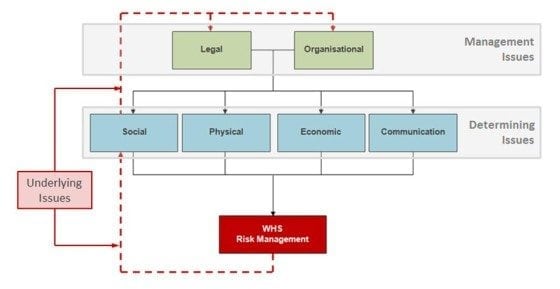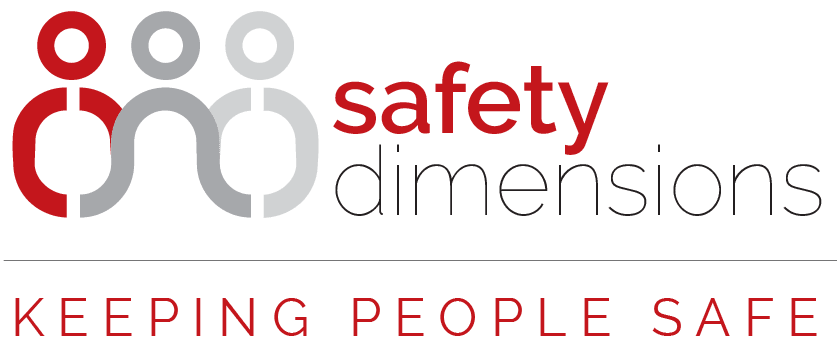 Taking the Next Step¦.’Managing’ WHS Risks, Not ‘Mitigating’ Them
Taking the Next Step¦.’Managing’ WHS Risks, Not ‘Mitigating’ Them
Dr Paul Johnston – Lead Consultant & Facilitator, Safety Dimensions
We use the WHS risk management cycle on a daily basis. However, in many instances, we only consider the overt management issues, and fail to account for the unseen issues that underlie the implementation of WHS risk management systems. The result may be an effective WHS risk management system, but not one that constitutes best practice for a given purpose/application. Indeed, such frameworks may introduce unintended negative consequences, by failing to manage the wider range of potential risk exposures and issues involved. It is argued there are three layers of factors that should be considered when discussing WHS risk management, namely Management, Determining and Underlying issues.
Whilst organisations in the main develop and implement their WHS safety risk management frameworks based on Management and Determining level issues, the remaining Underlying issues often go unnoticed, with organisations focusing on managing the perceived hazards or sources of risk rather than the overall consequences, be they positive or negative in nature, resulting from risk mitigations. The implications of this can be significant, both in terms of physical and psychosocial impacts. However, it is argued that by adopting an ontology based approach (that is, one that identifies and groups specific issues/elements into a hierarchy, and determines their characteristics and how they function and inter-relate), organisations can develop a model that not only defines these issues, but also the relationships between them, enabling organisations to then better understand and navigate the same.
 We are all familiar with the WHS risk management cycle.
We are all familiar with the WHS risk management cycle.
Although the specifics may vary, the core elements remain the same¦. We identify potential hazards; We assess the associated risks; We determine and implement controls; We evaluate those controls, and the cycle starts over.
We use this risk management cycle daily to maintain an ongoing process of managing risks. But are we truly managing these risks, or merely mitigating them? Some may say this differentiation is simply an exercise in academic double talk, but my experience is that organisations mainly consider overt management issues, but arguably fail to account for the issues that underlie the implementation of their risk management strategies. The result may be an effective management system generally, but not one that constitutes best practice for a given purpose or application. Indeed, such frameworks may introduce unintended negative consequences, by failing to manage the wider range of potential risk exposures and issues involved.
So, what are these issues and how can organisations take that next step in their WHS risk management journey?
Drawing on industry experience and research, I contend there are three layers of factors that should be considered when discussing WHS risk management, namely Management, Determining and Underlying issues. Whilst organisations in the main develop and implement their WHS risk management frameworks based on Management and Determining level issues, the remaining Underlying issues often go unnoticed, with organisations focusing on managing the perceived hazards or sources of risk rather than the overall consequences (be they positive or negative in nature) resulting from risk mitigations. The implications of this can be significant, both in terms of physical and psychosocial impacts.
The First Level: Management Issues
These are identified as influencing whether a WHS risk management strategy will be best practice in terms of organisational characteristics. As their name suggests, these will manage the manner in which the subsequent Determining Issues will be addressed, through the provision of an administrative framework¦this level industry does well.
The Second Level: Determining Issues
These are identified as influencing whether WHS risk management strategies will be best practice in terms of workforce characteristics. As this suggests, these issues are the coal face considerations whose primary function is to enable the matching of risk management strategies with the demographics and WHS needs/objectives of respective stakeholders….this level industry also does well.
The Third Level: Underlying Issues
These are identified as constituting those underpinning dynamics which may influence the actual impact and control of the former issues – essentially completing the management loop. Underlying Issues are the final and most crucial layer of considerations involved in WHS risk management. These issues/elements are the unseen considerations which underpin the key Determining Issues, and have a potentially significant impact on the overall WHS risk management cycle. These issues will define the micro/macro cultural environments in which the Determining and Management Issues are to be addressed, and form the contextual foundation on which WHS risk management systems will be based¦this level industry does not do well.
How can organisation better manage rather than mitigate their WHS risks?
The implications of the former observations can be significant. However, it is argued that by adopting a fundamental ontology based approach to WHS risk management, organisations can develop a model that not only defines these layers of issues, but also the relationships between them, enabling organisations to then better understand and navigate the same.
Those considerations defined as Underlying issues are at the core of the argument for adopting an ontology based approach, as they assist in directing organisations to consider the wider impacts, intended or otherwise, positive or negative, of their WHS risk mitigations. They constitute the crucial feedback loop that extends beyond the physical effectiveness of controls to also consider the impact they have on safety culture and the human factors associated with the same.
Indeed, it is argued that by adopting an ontology based approach, organisations can develop a model that not only defines critical issues, but also enables organisations to better manage the same by analysing a wider range of potential elements and how they inter-relate within an operational hierarchy. It assists an organisation to take the next step, and to actively manage their WHS risks, rather than merely mitigating them.

 Dr Paul Johnston is a lead consultant and facilitator at Safety Dimensions.
Dr Paul Johnston is a lead consultant and facilitator at Safety Dimensions.